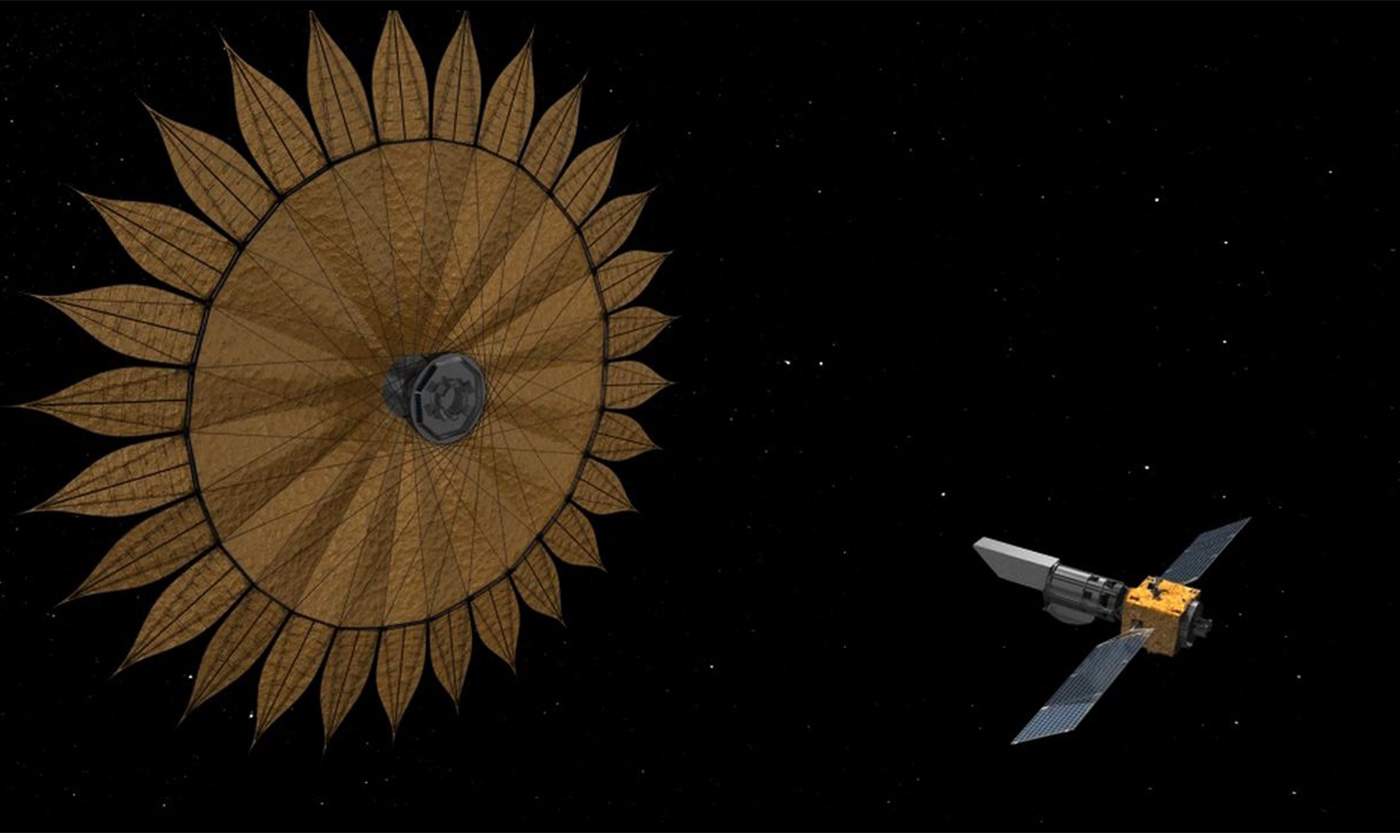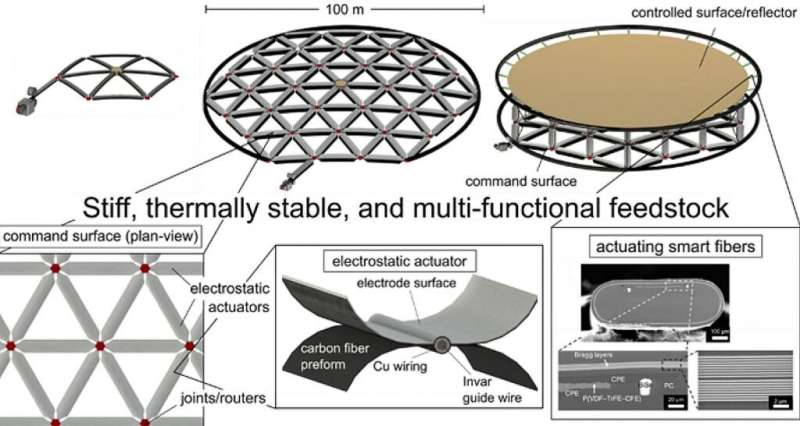The researchers plan to build a telescope with a mirror diameter of 100 meters in space in the future. To do this, its constructions will be woven from wire directly in space by a numerically controlled device.

Space telescope with a giant mirror
Scientists claim that modern ground-based telescopes with mirrors up to 30 meters in diameter are far from the limit for creating grandiose apparatuses. In the future, it is planned to build astronomical instruments, the light-cleaning elements of which will have a diameter of 100 m. Moreover, they plan to do this not somewhere, but in space.
At least, this is what one of the projects selected this year by the NASA Innovative Advanced Concepts (NIAC) program for the implementation of the first stage of development looks like. The authors believe that they will be able to cope with one of the main problems of modern space telescopes.
All of them, including the James Webb Space Telescope (JWST, which became a major sensation last year) are assembled on Earth. And although in space they can have almost any size and mass, in order to deliver them into orbit, it is necessary to fit them into the dimensions of rockets.
What prevents space telescopes from getting bigger?
In order for large telescopes to fit into a rocket, they are made folding. But this greatly pollutes and complicates their design. In addition, the shape of the mirror turns out to be imperfect. Therefore, there is a complex of problems that prevent space telescopes from being made large.
Firstly, this is the problem of the deployment of systems itself, during which something can always go wrong. Secondly, it becomes very difficult to turn these machines. Thirdly, there is a contradiction between the diameter of the telescope and its accuracy.
Due to the complexity of adaptive systems that must compensate for unfolding defects, the larger the diameter of the telescope mirror becomes, the less accurate it is. A lot of methods have been proposed to overcome this problem and, perhaps, exactly what the winners of the new project proposed is the answer to the questions.
Weaving structures in space
The essence of the proposed project, which will create a telescope in orbit with a mirror of 100 m, is that its construction will take place directly in space. At the same time, in order to reduce the cost, it will be entrusted to automatic systems.
The main obstacle on this path was still that it was impossible to use 3D printing for all the holding structures of this size. Instead, experts suggest using wire bending machines with computer numerical control (CNC).

According to their principle of operation, such devices are very similar to 3D printers, only instead of melting materials at certain points according to a template, they will weave wire into knots. In fact, we are talking about weaving, which the computer performs without human participation.
What will the new telescope be like
One of the main advantages of the new construction method is that the wicker structures turn out to be controllably flexible. That is, with the help of electric motors, they can be given the necessary shape. Thus, the perfection of mirrors is achieved at the submillimeter level, even when they are very large.
The researchers conclude that in this way it is possible to obtain a telescope with a mirror diameter of 100 m, which will have 10 m2 of reflective surface per kilogram. They have already built a model of such a tool with a mirror diameter of one meter.
And they have even more ambitious plans ahead. After all, they propose using the same technology to build a radio telescope in geostationary orbit with a field of view of 15 km. Its accuracy will be enough to obtain temperature profiles of exoplanets and directly find out if there is life on them.
According to phys.org
Follow us on Twitter to get the most interesting space news in time
https://twitter.com/ust_magazine
